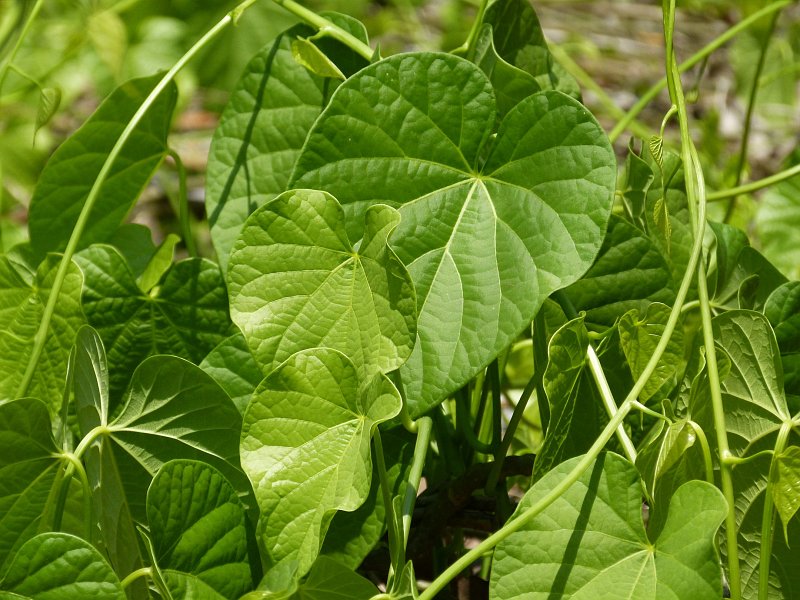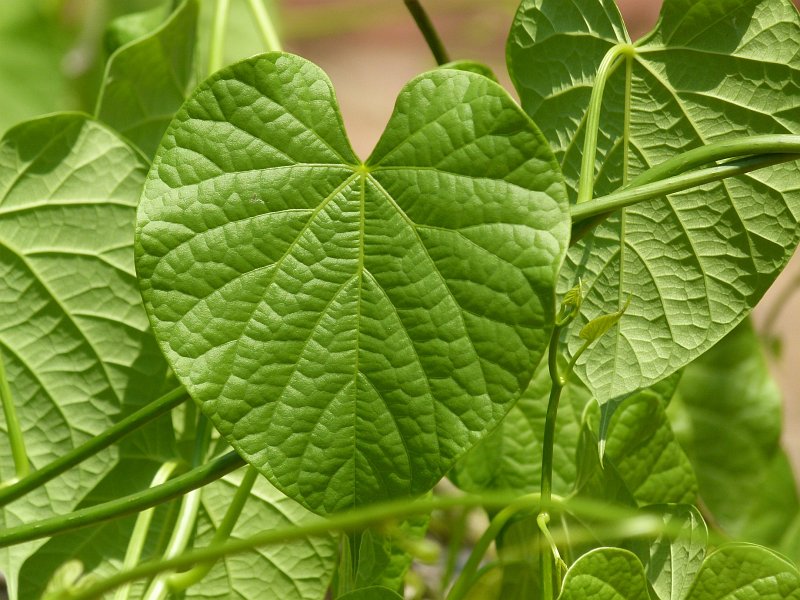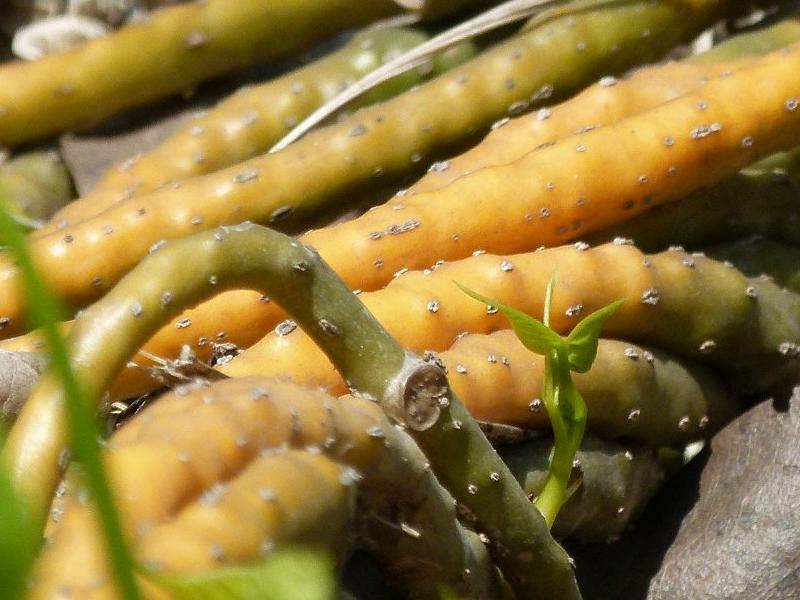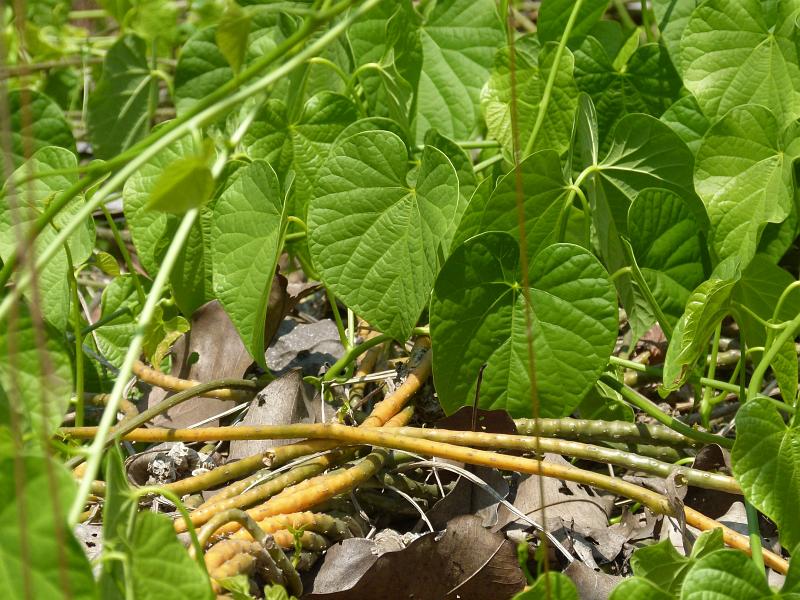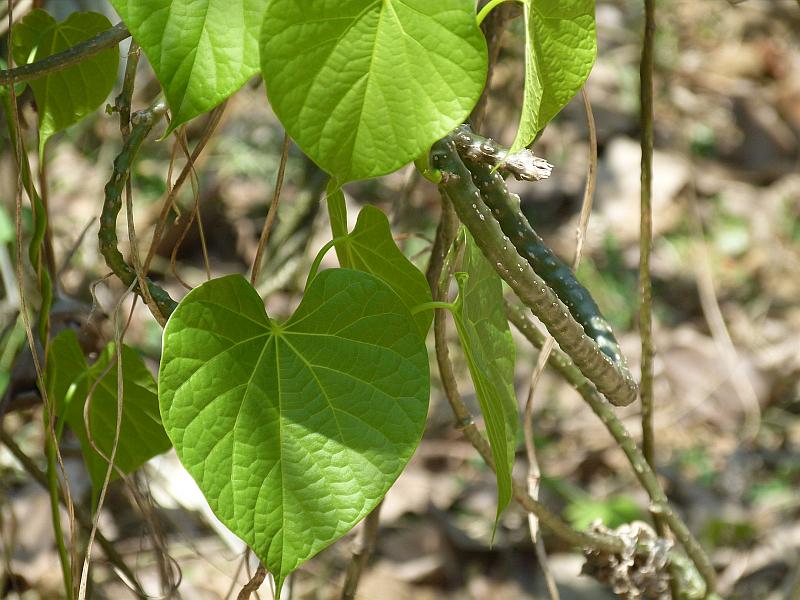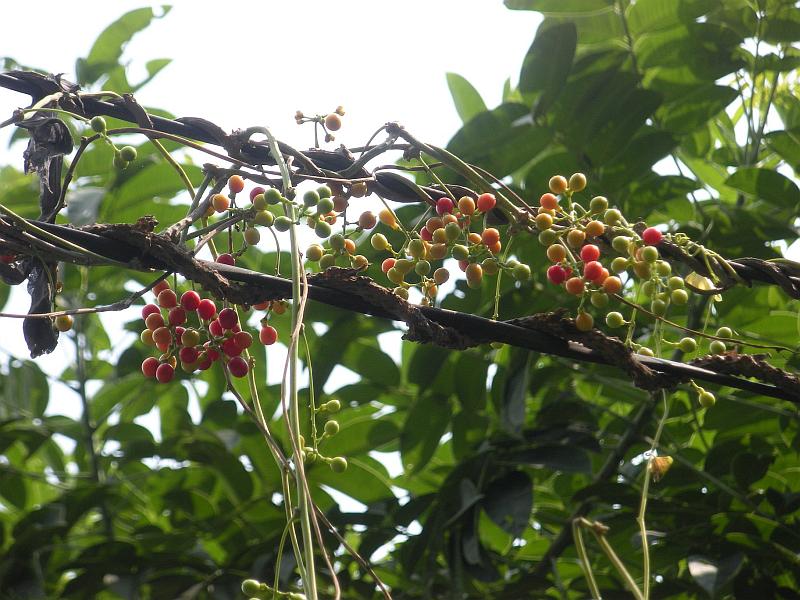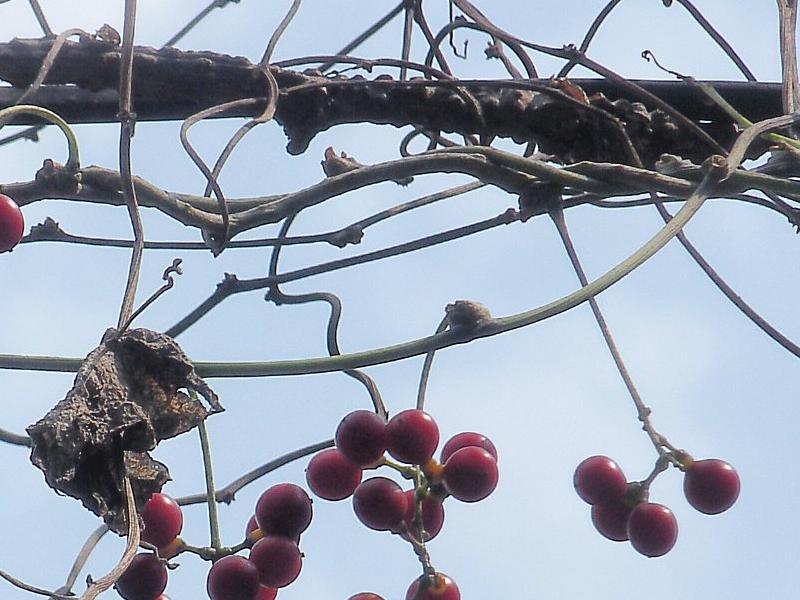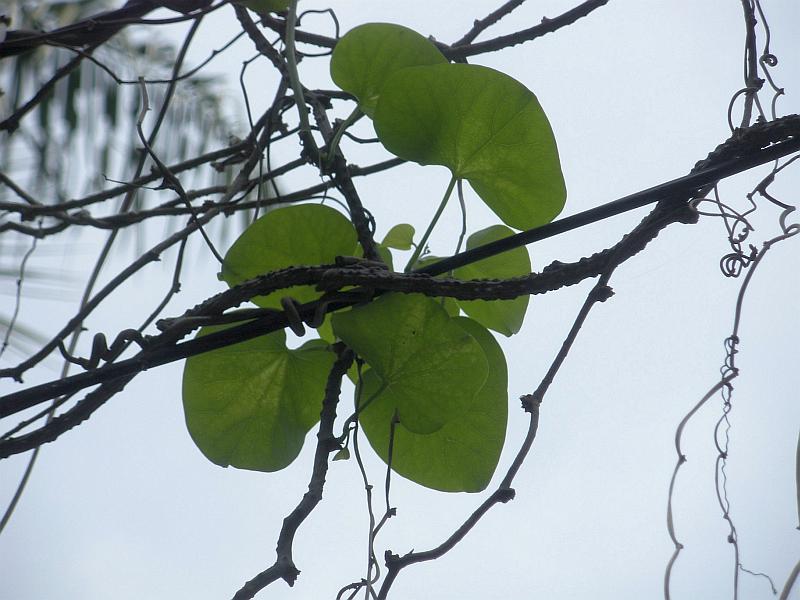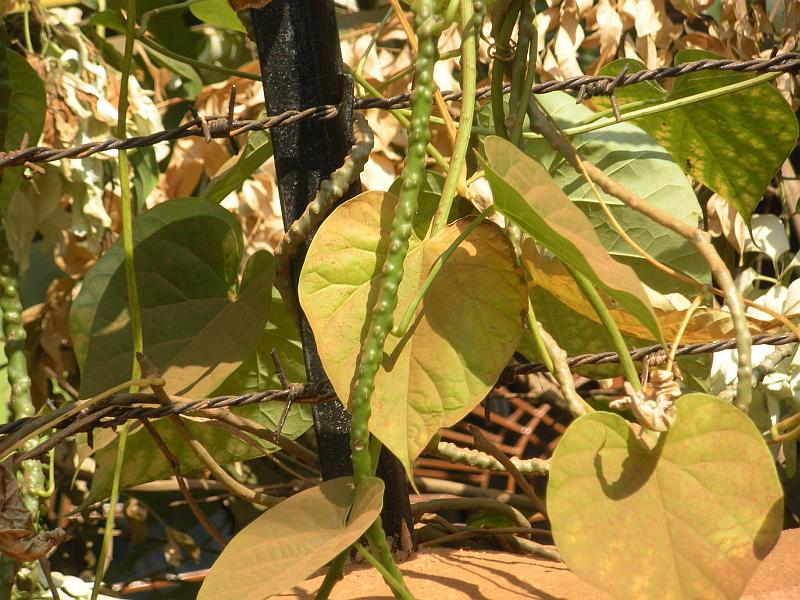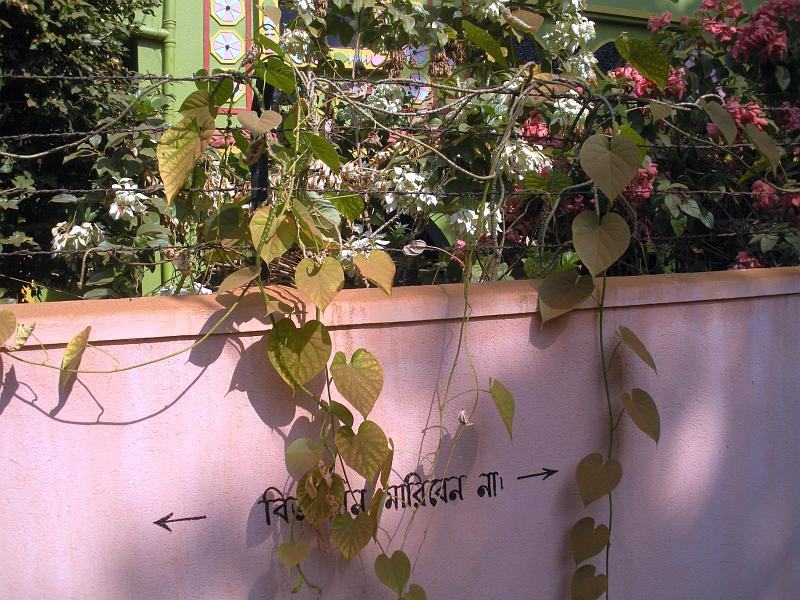|
Tinospora crispa (L.) Miers ex Hook. fil. & Thoms. (syn: Chasmanthera crispa Baill.; Cocculus crispus DC.; Cocculus verrucosus Wall.; Menispermum crispum L.; Menispermum rimosum Blanco; Menispermum tuberculatum Lam.; Menispermum verrucosum Roxb. ex Flem.; Tinospora crispa (L.) Hook. fil. & Thoms. (ambiguous synonym); Tinospora crispa Diels (ambiguous synonym); Tinospora gibbericaulis Hand.-Mazz.; Tinospora mastersii Diels; Tinospora rumphii Boerl.; Tinospora thorelii Gagnep.; Tinospora tuberculata Beumee ex K. Heyne) as per Catalogue of Life;
China (Yunnan), India (West Bengal, Arunachal Pradesh, Assam), Thailand, Java,
Vietnam, Laos, peninsular Malaysia, Cambodia, Singapore (introduced), Lesser Sunda Isl. (Sumbawa), Philippines (Luzon, Mindoro, Culion, Basilan, Mindanao), Christmas Isl. (Austr.), Lesser Antilles (introduced) (Montserrat (introduced)), Myanmar [Burma] (Sagaing), Sri Lanka as per Catalogue of Life; India: Mixed deciduous forests, up to 900 m. West Bengal, Arunachal Pradesh and Assam; China, Cambodia, Thailand, Malaya, Java to Philippines as per BSI flora of India;
1. stem tuberculate; petals usually 3; drupe orange; endocarp 11-13 x 7-9 mm = crispa
2. stem not tuberculate; petals 6; drupe red; endocarp 6-7 x 6-7 mm = cordifolia
Ex-situ Silviculture : Tinospora crispa (L.) Hook. f. & Thomson : 5 posts by 3 authors. Attachments (5).
Thank you sharing.
Please let me know how do we differentiate it from T. cordifolia?
Thank you Sir. The KEY goes –
1. stem tuberculate; petals usually 3; drupe orange; endocarp 11-13 x 7-9 mm = crispa
2. stem not tuberculate; petals 6; drupe red; endocarp 6-7 x 6-7 mm = cordifolia
MBNN Fortnight-sk02 JHARGRAM-sk-Oct-23 (Menispermaceae) Tinospora crispa (L.) Hook. f. & Thomson : 3 posts by 2 authors. Attachments (4).
Two documents to identify Tinospora can be accessed at –
There was a third document where from I obtained Key to three spp – cordifolia, crispa and sinensis but i fail to find that pdf.
This plant is growing in Govt. park where it had an identity plate and my earlier post is efi thread
this also is sold as padma gulancha by street vendors and sometimes the kabiraji shops. I need to do a short survey. thanks.
do you have detailed pictures of the stems of t. tomentosa and t. crispa that you can send me? Prain is silent on crispa and somewhere in a scholastic article i have read that Indian species samples of T. cordifolia are often mis-identified, may be with crispa. when was prain published? it was in 1903…. you seem to be interested in crispa, attached here the entries from Prain, Hooker, Haines, Voigt and Roxburgh. Attachments (5)
Tinospora sp. for ID : 3 posts by 3 authors. Attachments (1).
Location : Lengpui, Mizoram. Altitude : ca. 400 m. Date : 09-05-2014.
Habit : Deciduous climber. Note : Tinospora crispa ? Growing wild.
Tinospora – species in India & eFI with details & some keys I think it is Tinospora crispa (L.) Hook. f. & Thomson MBNN Fortnight-sk04 Hooghly-sk-Oct-25 (Menispermaceae) Tinospora crispa (L.) Hook. f. & Thomson : 1 post by 1 author. Attachments (3). This is again from Hooghly, but from another end of the district! This is also T. crispa as tuberculate stem can be seen clearly.
But the problem is that i made a mix-up in the last mail in my earlier thread, but not all the pictures in that thread.
MBNN Fortnight-sk03 Hooghly-sk-Oct-24 (Menispermaceae) Tinospora crispa (L.) Hook. f. & Thomson : 7 posts by 2 authors. Attachments (2). It is interesting that ‘Bengal Plants’ features only two species – 1) T. cordifolia Miers 2) T. tomentosa Miers. But i found this in my village in 2012 and much before i visited Jhargram. It remained unidentified because i have never submitted to group. Now i think it is same T. crispa that i recorded in Jhargram.
local kabiraj shops call it Padma gulancha (t. crispa) as opposed to just gulanch or amrita for t. cordifolia.
two types of these stems hang outside their shops at end of monsoon , selling by the kilograms.. as per Bengal Plants T. tomentosa Miers is PADMA-GULANCHA, while T. cordifolia…. no wonder, these collecting tribals do not know the difference
t. tomentosa “tubercles” on the stem look different in size and shape than t. crispa.. I’ll have to go and but a whole bunches of these and make a detailed survey… Since joining efi I’ve learned that regional names can’t be relied upon to establish an identity to species level, there are several instances here – SHOLA, KOCHU, NOTEY etc, perhaps nationally KADAM, TAMAL, ASHOK etc. yes
that’s why binomial so very useful when the key works otherwise we are in the same boat as the tribals, may be even worse off in some cases. esp. since we don’t have the gut knowledge like they do Yes, in many respect we are worse off than tribals, they have knowledge and they are far more capable of identifying a local wild species according to their inventory. This set is of a 100% wild Tinospora from my village. Since the stem is tuberculated it should be T. crispa.
But the interesting point is that inflorescence and leaves are growing together, so the term, “not coetaneous with leaves”, is not applicable here.
I used this feature (“not coetaneous with leaves”) to counter your view in Satish Ji’s post – https://groups.google.com/forum/#!msg/indiantreepix/oyJr5e-LcAs/SDnXlXpK70MJ. Of-course I still think the species in that thread is not T. crispa (for absence of tuberculated stem, please note the tubercles in young stem in my pictures).
My point is that I have learnt that not all the info/literature/images found in the net is exhaustive.
Attachments (3)
This looks like Tinospora cordifolia to me. I think the stems of all T. species are tubercled, but in T. crispa the tubercles are more prominent. Thank you …, you would know it better, but how do you judge “prominent”? The one I recorded in a Govt. park did bear a name plate and the tubercles do not look very prominent in the photographs of that post. Tinospora cordifolia stem bears lenticel, somewhere I read, but does this lenticel called tubercle?
|
Tinospora crispa
Updated on December 24, 2024


